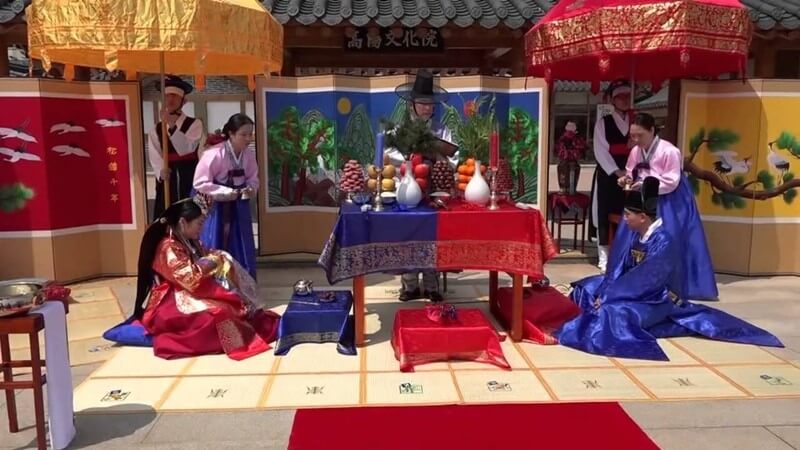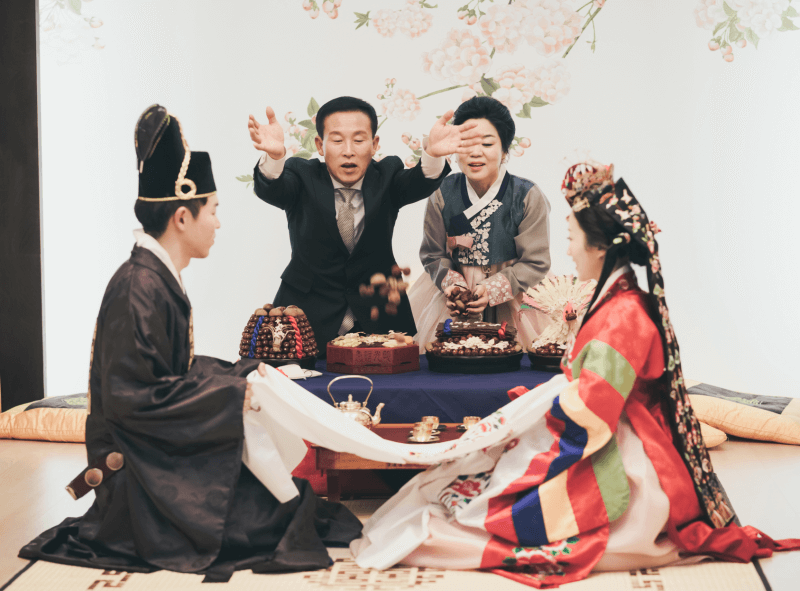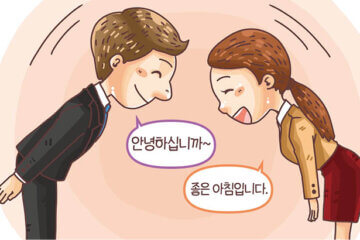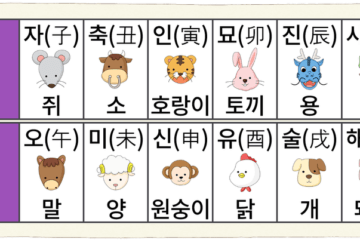Wedding 4 – the wedding Day
It is now time for the wedding after finding a spouse, planning the event, and sending the ham.
Traditional Korean marriages are increasingly regaining popularity after being long eclipsed by more Western-style events. The groom dons a stiff embroidered belt and the attire of an ancient court official for the ceremony.

Traditional Korean wedding
The bride dons the attire of an old lady of the court, complete with a jeweled coronet, and has red blotches painted on her cheeks and forehead to ward off evil. The groom presents a wooden goose constructed of the bride’s parents before the ceremony, which is often held in the front yard of the bride’s home.
It implies that he will remain devoted to his partner forever, much like the geese. Following that, the groom takes a seat to the east of a tall table covered in fruits, candles, and red and blue fabric. Then the table will be set with a chicken, duck, or goose. With two attendants by her sides and a large white cloth held in front of her face, the bride enters and takes a seat to the west of the table.
The bride and groom are then given a ceremonial handwashing before bowing to one another once more. The bride lowers the cover from her face and they turn to bow to the guests. The marriage ceremony is over, so the gusets can start eating. The couple first formally introduces themselves to the groom’s parents and family following the wedding ceremony. The name of this procedure is P’yebaek.

P’yebaek
Pheasant and Chinese dates were traditionally prepared and served by the bride’s side. The pheasant was given to the mother-in-law of the bride, and the Chinese dates were given to the husband’s father. Since pheasants are uncommon, hens are frequently used instead.



0개의 댓글